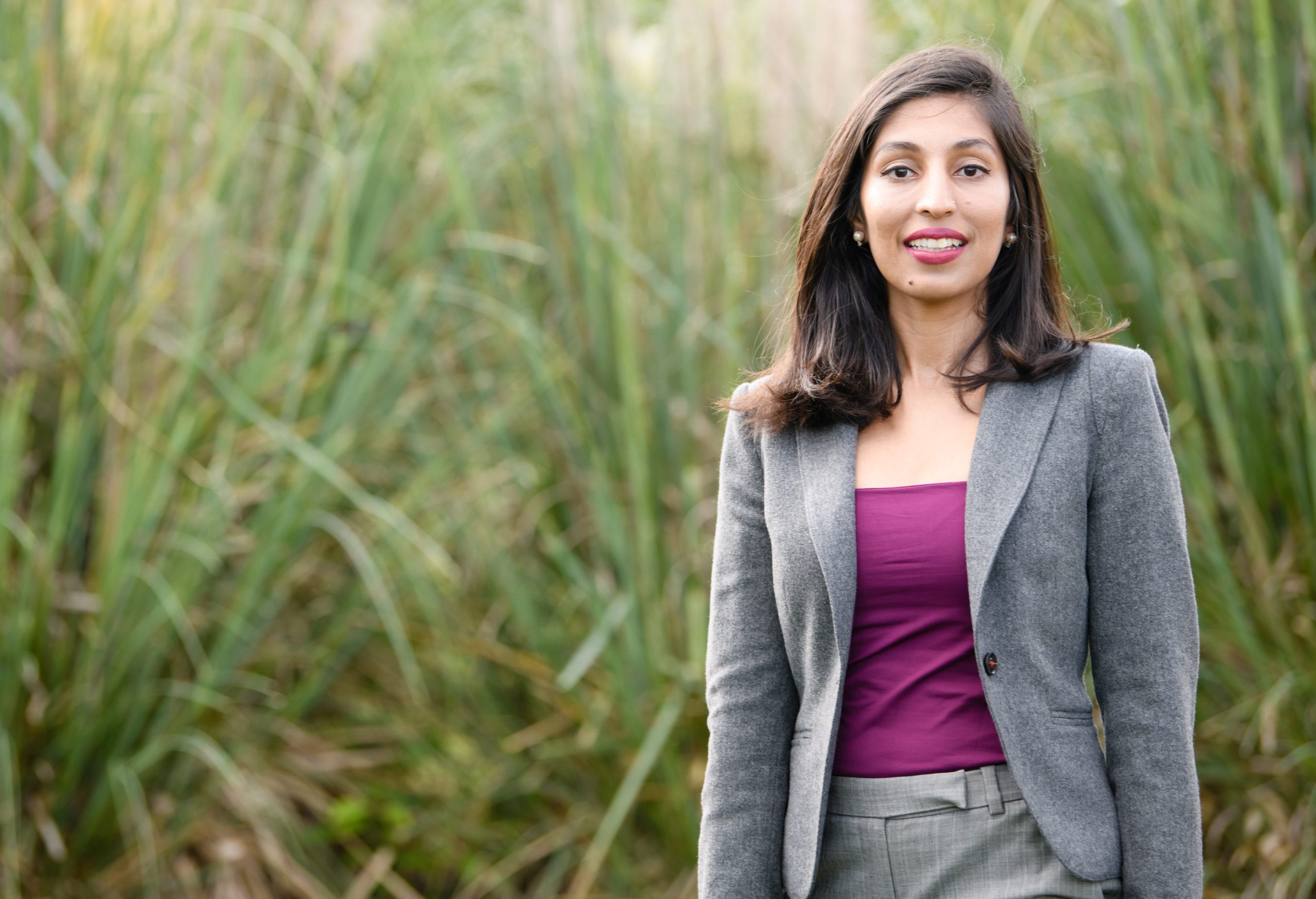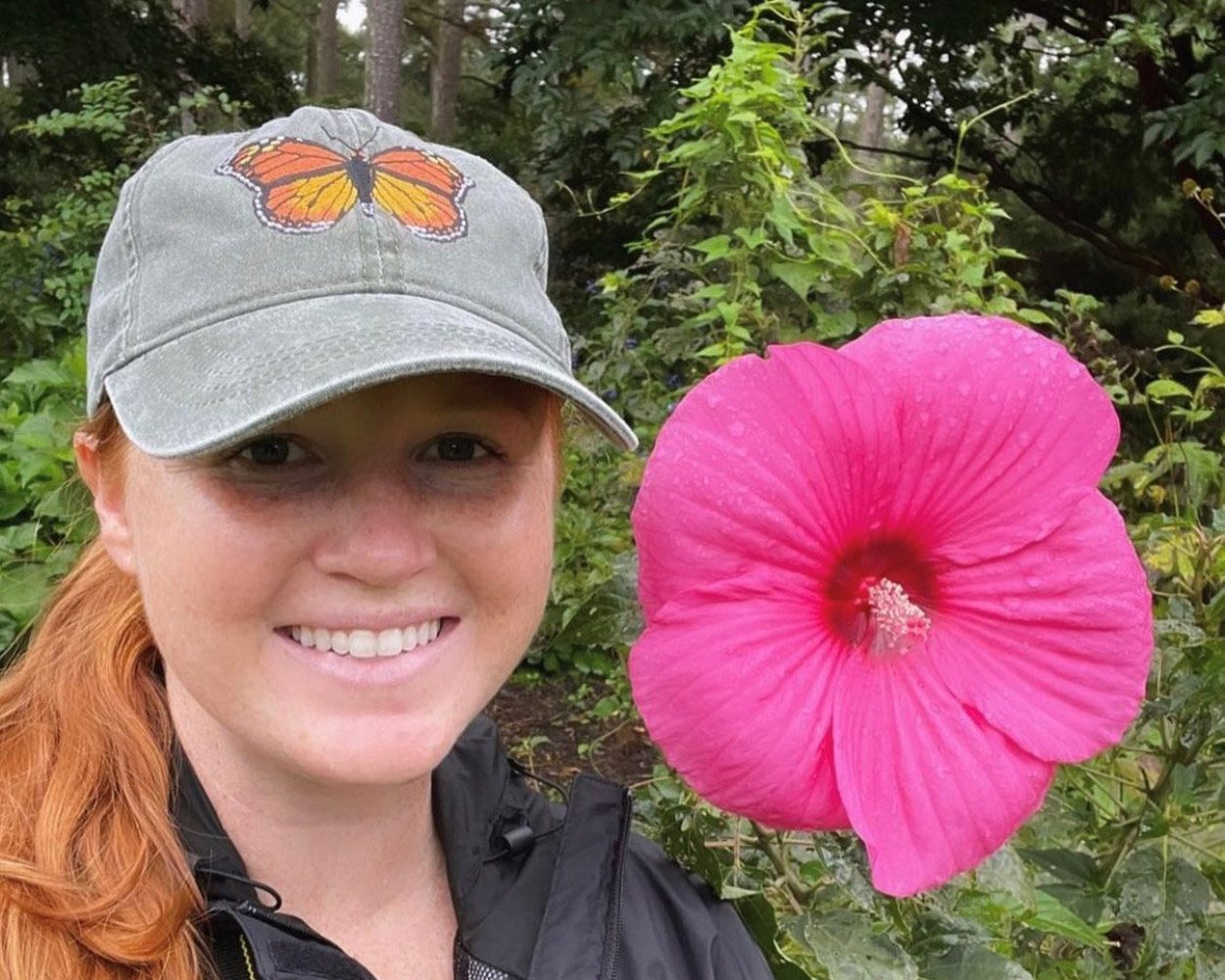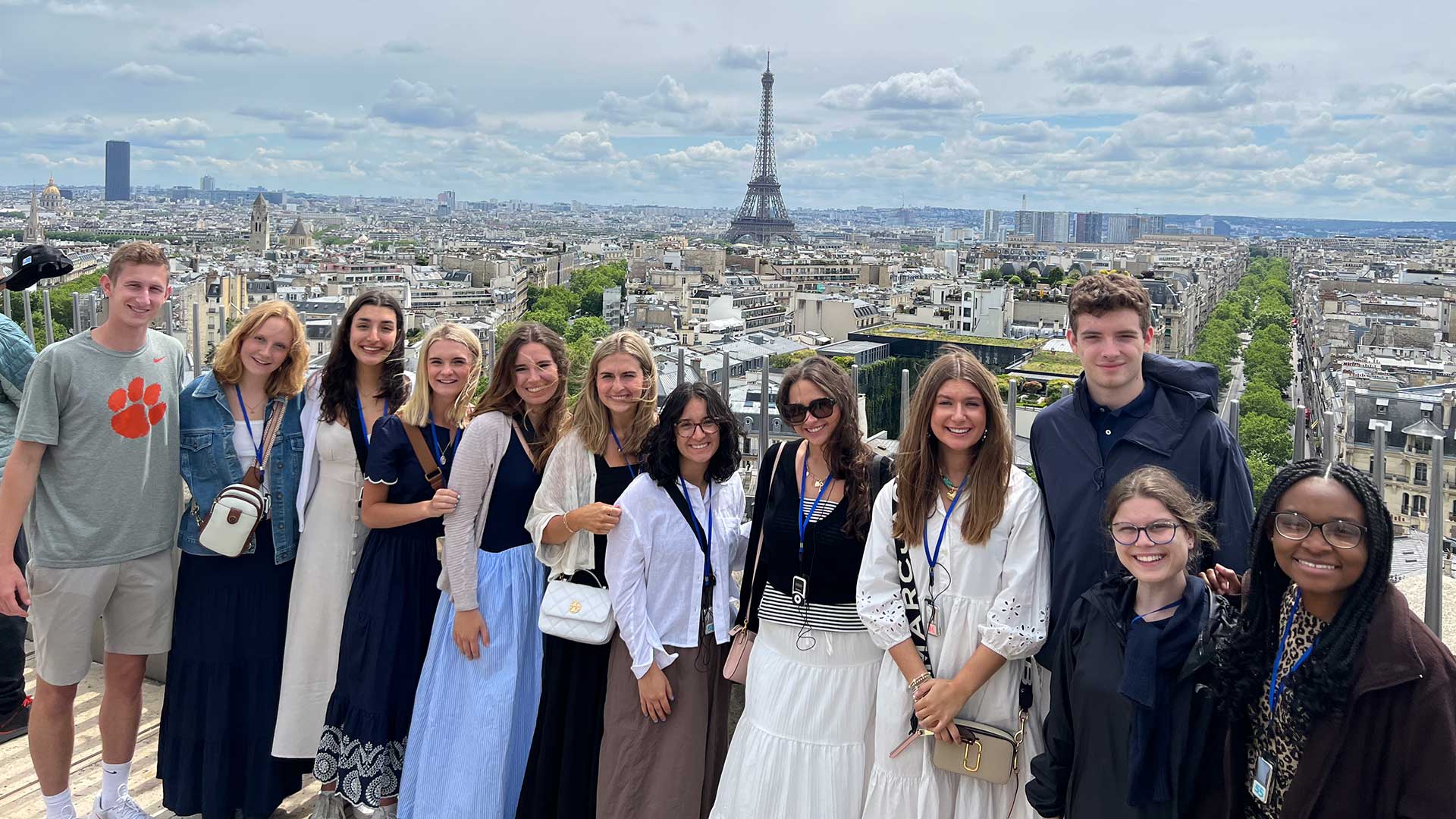Faculty in the College of Architecture, Arts and Humanities are placing women’s voices at the forefront of the academic conversation. The College is pleased to spotlight some of these professors during Women’s Celebration Month at Clemson University.
Mashal Saif: Dispelling myths about Islam
Students often walk into Mashal Saif’s introductory Islam class at Clemson University with misconceptions, but also a willingness to learn.
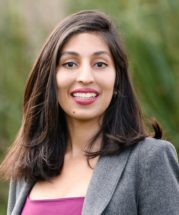
Some may arrive with a litany of stereotypes. Saif, Assistant Professor of Religion, lists some common assumptions to which students may have been exposed: “that Muslims are terrorists, that they’re terrible to women, that they live in undeveloped countries.”
Saif disrupts that narrative. “It’s incredibly important to me that students recognize that Muslims are a highly diverse group,” she said. “I want students to recognize their humanity and realize that Muslims are everywhere, including right here in Clemson.”
In teaching about Muslim women, Saif believes it’s particularly important to allow women “to speak about their own lives and experiences.”
“I center the voices of Muslim women through a variety of primary sources,” she said. “In my course on Islam, we study Islamic feminism and watch Muslim women debate veiling. Similarly, in my course on the Quran, we read a book titled ‘Qur’an and Woman: Rereading the Sacred Text from a Woman’s Perspective.’”
Saif, who was born in Pakistan and came to the United States at age 17 for college, is the only professor at Clemson who teaches courses on the Islamic faith, though some other instructors touch on Islam indirectly.
Saif’s courses explore Islam through writings and textbooks, but her students also visit a local mosque and chat informally with Muslim guest speakers, men and women.
Some are recent converts, others come from families that have been Muslim for generations. Students also visit her class to discuss their experiences of being Muslim in America.
“Students get to connect with Muslims on a human level, finding similarities and recognizing differences, but respectfully and thoughtfully,” she said. “I want them to know that Islam is not something that is far away, somewhere else, but right here,” she added. “It furthers their understanding of Islam’s diversity.”
Melissa Edmundson Makala: Raising the ghosts of women writers
Melissa Edmundson Makala is shining a bright light on ghostly stories by women writers of the past. Makala’s work has focused on reviving interest in largely forgotten women authors who specialized in the supernatural.

“Women writers were integral to the development of the ghost story, but their contributions have been largely overlooked by scholars and anthologists alike,” said Makala, a lecturer in English.
In the 19th and early 20th centuries, many women ghost story writers were well known, but the male editors who anthologized and republished tales of the supernatural neglected many women authors.
Thanks to literary detectives like Makala, women ghost story writers of the 19th and early 20th centuries are being republished and read.
In the past few years, Makala has edited three anthologies of women’s ghost story writing: “Avenging Angels: Ghost Stories by Victorian Women Writers,” “Women’s Weird: Strange Stories by Women, 1890-1940” and “Women’s Weird 2: More Strange Stories by Women, 1891-1937.” In addition to her other books, in 2018 she wrote a critical study, “Women’s Colonial Gothic Writing, 1850-1930: Haunted Empire.”
Ghost stories are often thought of as light entertainment, Makala said, but the subversive genre actually offers sharp socio-cultural critiques.
“By recognizing women’s voices,” she said, “we can better appreciate a broader range of topics within supernatural fiction, including domestic and child abuse, gender and economic inequality, class difference, and the detrimental effects of imperialism.”
Andreea Mihalache: Supporting women in architecture
Architecture has traditionally been a male-dominated field, but Andreea Mihalache is working to bring women’s perspectives to the discipline by mentoring women architecture students and encouraging discussions of social justice.
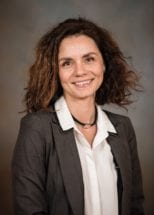
As the coordinator of the School of Architecture Lecture Series, Mihalache organized a thematic series on “Women in Architecture.” Mihalache, Assistant Professor of Architecture, is currently coordinating a series on “Design, Race, and Social (In)justice” that brings together conversations about race and broader social inequalities in the built environment.
“These discussions need to start in the classroom, from the references we make, the case studies we present, and the ways in which we teach history,” Mihalache said. “At Clemson, I’ve been inspired by my female colleagues in the School of Architecture, and specifically by our previous director, Prof. Kate Schwennsen, who is making sustained efforts to highlight and celebrate the presence of women in architecture.”
Mihalache has been the faculty adviser for the Women in Architecture Student Organization. She also serves on the Clemson University Commission on Women and, with the full support of the Commission, its Chair, Lori Dickes, and its Deputy Chair, Jean E. McKendry, she led the efforts for a student competition to design a t-shirt to celebrate 2021 Women’s History Month.
Mihalache teaches design, architectural history and theory, and visualization. Her current research examines intersections of mid-century architecture and visual arts with the study of boredom in philosophy and aesthetics. In her book manuscript “Metamorphoses of Boredom: Wandering. Waiting. Wondering,” currently under review with The University of Virginia Press, she argues for a positive valorization of boredom as a catalyst for imagination and creativity.
Clare Mullaney: Revising myths of disability
Clare Mullaney’s discipline of disability rhetorics owes a debt to feminist scholars who sought to correct myths that go back as far as the Greeks.
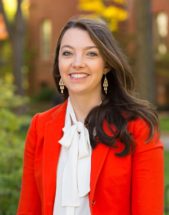
“Historically, women have been marked as disabled,” Mullaney, an assistant professor in the English Department. “Going as far back as early Greek thinkers, Aristotle described women as ‘deformed males.’ To revise such statements, first wave feminists asked us to reimagine women as just as capable as men — both politically and educationally.”
More recent conversations in the field of disability studies seek to center the experiences of disabled women, Mullaney said.
“In her recently published book “Thick,” from 2019, Tressie McMillan Cottom talks about how Black women’s pain is dismissed by medical professionals,” Mullaney said. “As we consider Women’s History Month, the task of disability studies moving forward is to consider the ways disability is a deeply gendered and racialized category.”
The field of disability studies began in the 1980s as a subset of the social sciences.
“It makes the argument that disability is not just a medical category but a socially constructed one, which means that individuals aren’t inherently disabled but that the world disables them whether through inaccessible environments, a lack of access to quality health care, etc.” she said.
It wasn’t until the late 1990s that humanities fields began to think about disability in history and literature.
“In these contexts, we’re asked to understand what it means not to wish disability away but to confront how it challenges our cultural assumptions about what bodies and minds can or should do,” Mullaney said. “When I end my courses in disability studies, I reference the designer Liz Jackson who talks about how children look once at disability and then are taught to look away. What disability studies tell us is that we need to keep looking.”
Rebecca Shimoni Stoil: Exploring the lives of rural women
Rebecca Shimoni Stoil’s research focuses on rural America with a particular interest in grassroots activism and politics, including the activities of women’s farm advocacy groups. At Clemson, she’s worked together with Lee Morrissey of the Humanities Hub to establish an international reading group on modern rural politics.

Shimoni Stoil has brought attention to the role that groups such as Women Involved in Farm Economics (WIFE) played in advocating for family farmers and improved conditions in rural America.
“I loved researching groups like Women Involved in Farm Economics or the Cowbelles, which were some of my first forays into the way that people on the ground envisioned their political economies and thought about the ways to improve rural life,” said Shimoni Stoil, Assistant Professor of History. “I identify strongly with the women of these groups who, in the early days, saw themselves as both an integral part of but also on the outside of the broader community of farm advocacy.”
Shimoni Stoil emphasizes the complexities of women’s lives in rural America.
“Sometimes, and very incorrectly, modern rural America is seen as quite monolithic,” she said. She added that while she studies activism in the late 20th century, gender and rurality still intersect in powerful ways today. Issues like access to child care and health care in areas with sparse population density remain challenges that exacerbate rural poverty in a changing economy.
The field of rural women’s studies frequently tries to bridge between theory and practice. This year, Shimoni Stoil will participate in the Rural Women’s Studies Association’s triennial conference which brings together activists, practitioners, and academics.
A woman’s perspective is particularly useful in highlighting the nuances of rural life, she said.
“While being a woman does not necessarily give you superpowers of empathy as earlier generations believed, it does allow me to be more sensitive toward dynamics of inclusion and exclusion and to the ways in which power translates into myriad sensibilities of dominance and oppression,” Shimoni Stoil said. “Questions of where power lies, where it is hidden and where it is exposed, who sees themselves as entitled and who does not are central to studying the politics of modern rural America.”

